We waded into the Bellinger River at the first crossing as two brothers on a three day fishing adventure. We had a rod each, a small selection of lures, no experience catching Australian Bass and no history with this river system.
But we emerged with trophy catches, lifelong memories, a newfound appreciation of this iconic species, and an epic story to tell back home.
This is how we did it fishing the Bellinger River in Northern NSW chasing wild river Aussie Bass.
The Hike In
Flowing from the escarpment of the New England tablelands, the Bellinger River was in high flow during summer after high rainfalls and a recent flood events.
Heading towards the range from Bellingen in Northern NSW, we parked the car at the end of Darkwood Road and had to cross the Bellinger River to meet up with the old trail road.
The hike in from here was easy and pleasant and there were white water rafters along this first section. They informed us that after the big floods in the area recently there were no bass around, we weren’t so sure but were happy to try and prove otherwise.
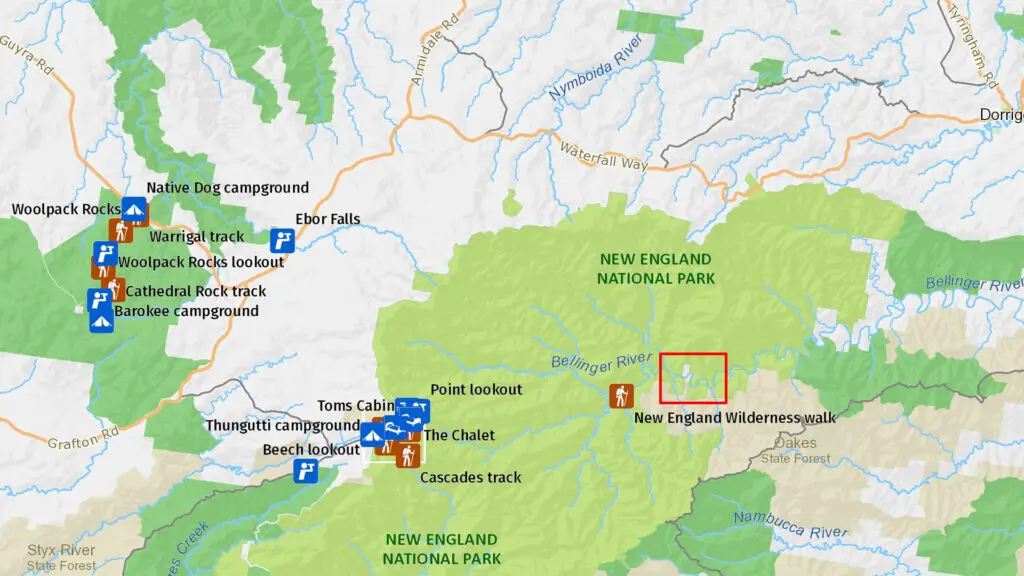
With the recent rainfalls both the water height and overgrowth was up considerably, with many sections of grassland and weed above our heads as we pushed through.
We poked ahead with our hiking poles eagerly to ward off any snakes that would have been impossible to see. Despite this, I still managed to kick a juvenile Eastern Brown on our way out.
As avid hikers we were comfortable with our load out, but neither of us had attempted pack loaded water crossings before, so edged our way carefully through the first (and deepest) crossings — building up come confidence.
We were able to cross the river several times by finding sections no more than waist deep along most stretches, in drier times these would probably be thigh or knee high.
That confidence was short-lived when I took a drenching in a shallow section of rapids that Tom managed to capture on camera — much to our amusement as we replayed the footage for a good ten minutes in stitches.
The area we explored and fished sits between old abandoned farms that have been reclaimed by both nature and National Parks, and a bush campsite known as Scraggy Creek campground which forms part of the multiday New England Wilderness Walk.
There are 4WD trails down to the old farmhouses on the southern side of the river nearby for easier access, but we crossed the river again and set up a wild camp in a remote section on the northern banks.
The Camp
I strung a tarp between some trees and rolled out a bug net bivvy, while Tom unloaded his small tent and found some flat ground to set up.
For the next three days we enjoyed riverside meals, bass fishing, river hikes and total seclusion.
Despite a few sections of decent rain we were really comfortable here and were able to get onto fish from the banks of our camp or within an easy walk up river.
The Gameplan
The middle of summer in the Aussie bush is deafening with the sounds of cicadas, which were plentiful and well observed in the grasses along the hike in.
We had a selection of small hard body jerk baits, crankbaits and cicada surface lures that definitely matched the local lookers.
We had both picked up some cheap, new, never used gear for the trip as our regular lightweight and estuary setups didn’t meet our space requirements in our packs.
We were able to cast the full width of the river with our lightweight 2-4kg travel rods and 5lb braid. Sometimes this meant swimming over to un-snag lures on the far bank. But we got our eyes in after the first day and didn’t have many hang ups afterwards.
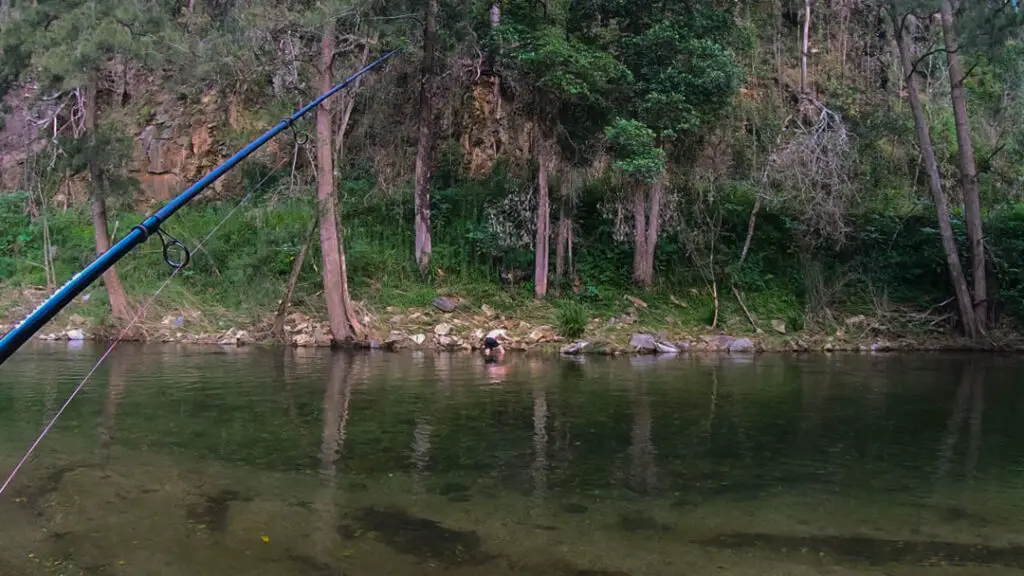
I had a cheap telescopic Shimano travel rod that folded down small enough to fit in the side of my pack. We both ended up using the same small reels that we absolutely loved — the Daiwa AIRD LT in a 2000 size. These are small, light, cast a mile and very affordable.
I still use mine today on my smaller estuary setup for the size and weight, and really like the feel of this reel handle.
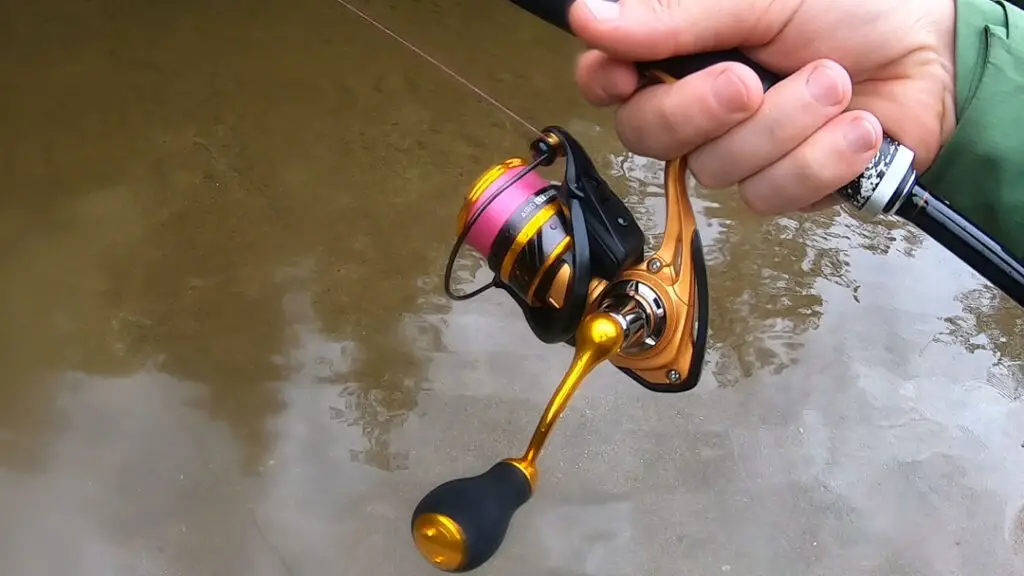
Each day we hiked further up or down stream to find new holes during the heat of the day, but the majority of our hook ups were during low light at sunrise, sunset and into the night.
We were able to spot plenty of big bass (and some mighty eels!) in the holes and shade but they were not interested in any lure action, likely resting up to avoid being seen in such clear water.
The bass were very aggressive during the low light bite windows though, and their pops and boils could be heard all night from camp.
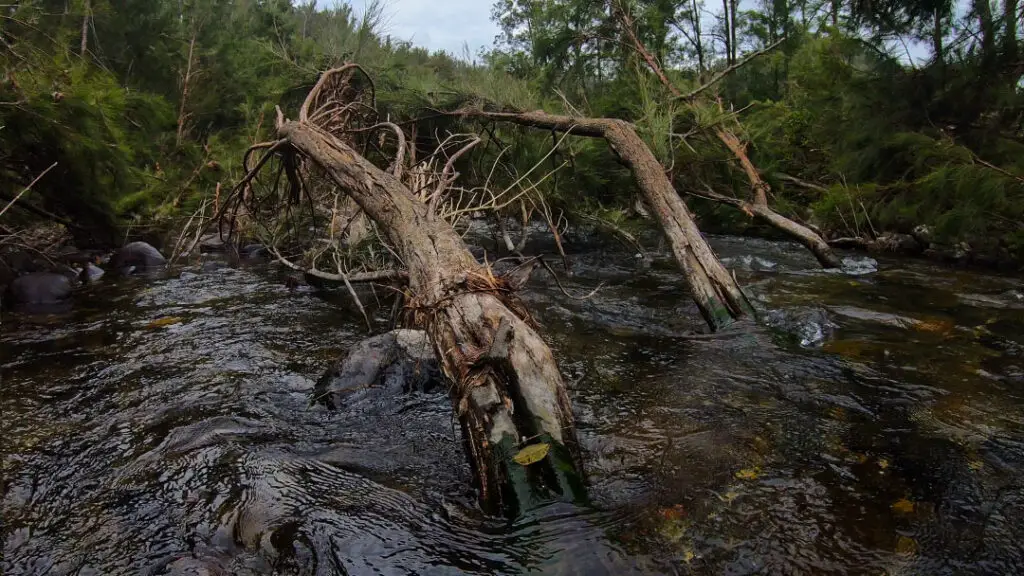
So when the fish weren’t on we enjoyed exploring the area, resting up at camp, checking our gear and cooling off for a swim.
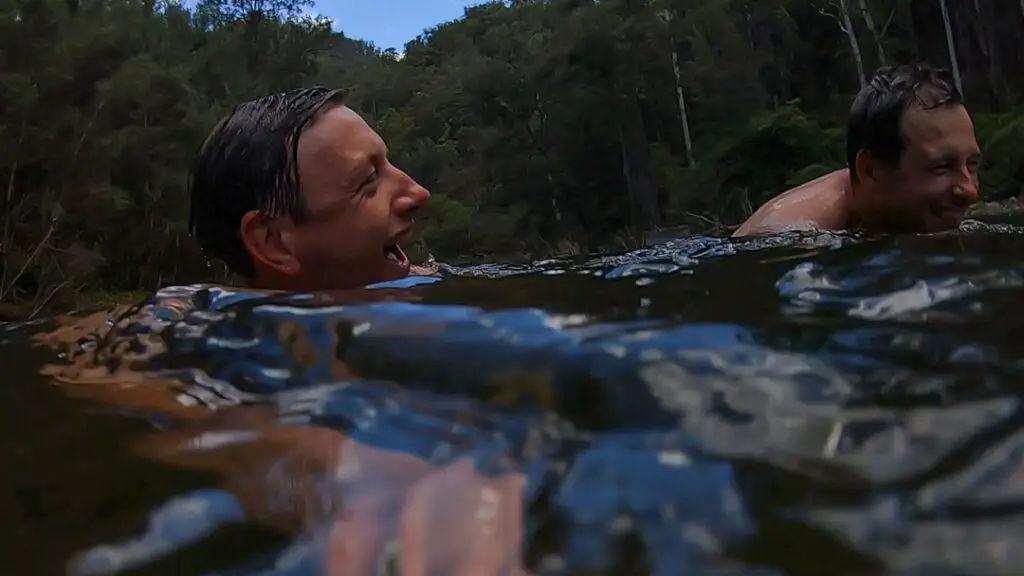
The Fish
Over the three days Tom finished with several impressive, trophy sized bass that he was nailing on surface lures (mainly the cicada).
I picked up a stonker around 40cm (measured on the rod) on the first night that almost pulled me in, and a few smaller bass mostly fishing with jerk baits and crankbaits.
As two first time bass fishos, this was a bloody ripper trip to remember, and one that has changed our fishing and that we are both known to still reminisce about to this day.
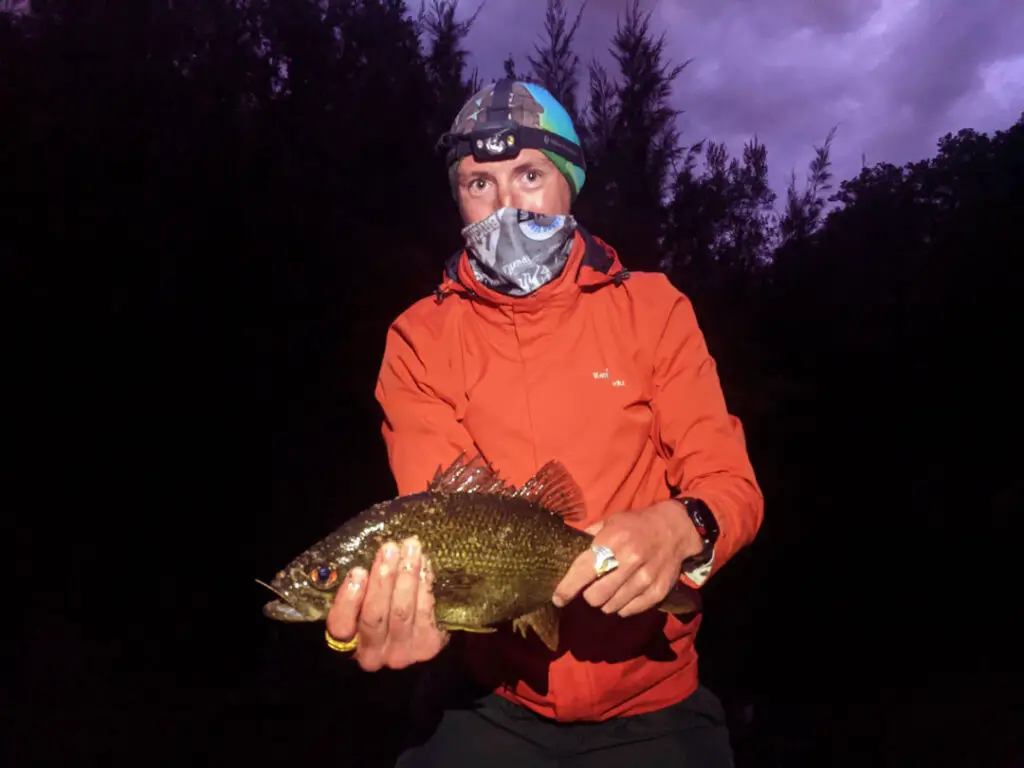
The absolute beauty of this region and environment can’t be understated. And the incredible resilience of the Australian Bass in such wild country, through bushfires and floods, makes it even more remarkable.

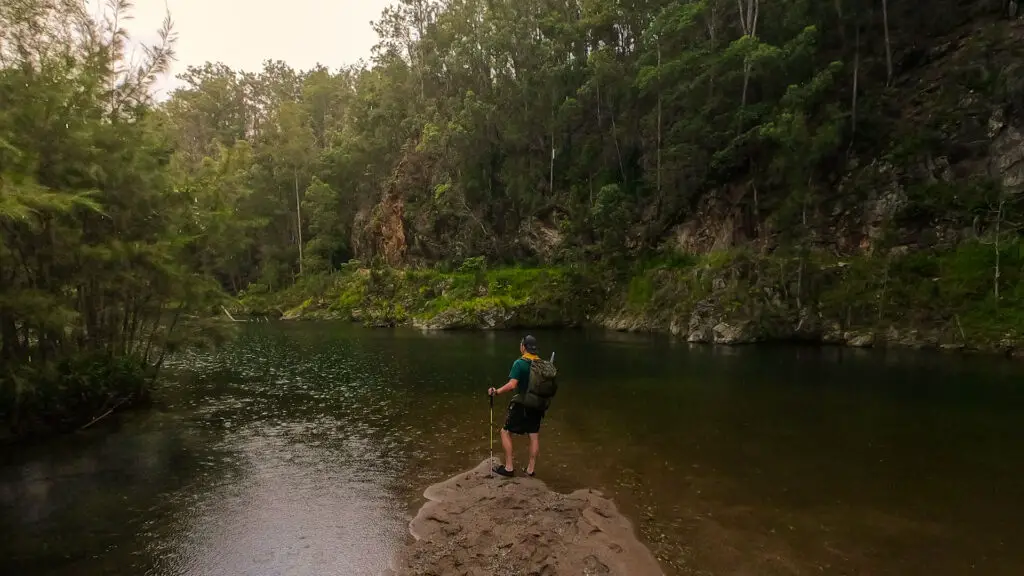
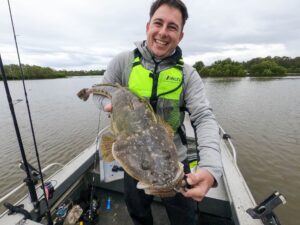
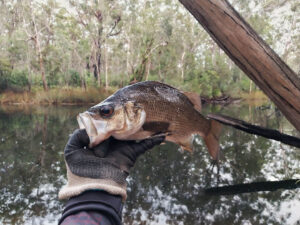
One Response